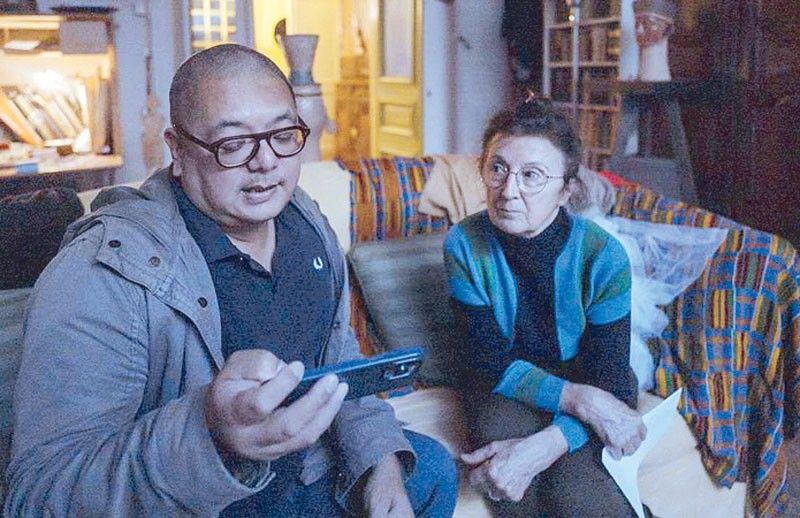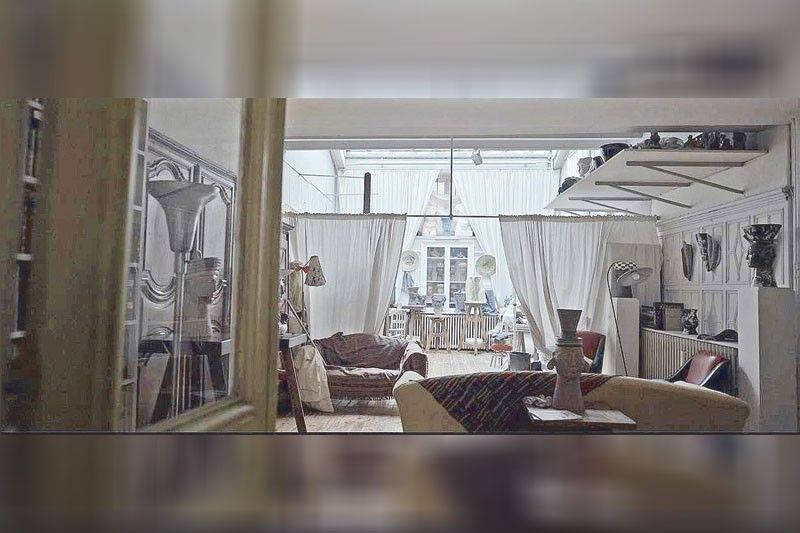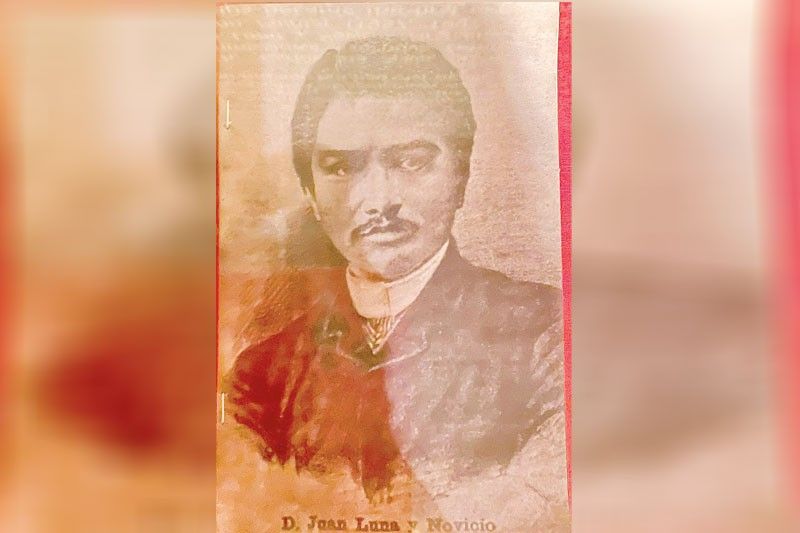Martin Arnaldo on Juan Luna: Victor, victim or villain?


Filipino artist Juan Luna of Spoliarium, Blood Compact, Death of Cleopatra, and now, Hymen, oh Hymenee! fame, excelled at a time when racism was rife in Europe and Filipinos were thought to be “uncivilized.”
That racism still resonates with Filipino filmmaker Martin Arnaldo, who created the 21-minute video on Luna showing at the Ayala Museum to accompany the exhibit “Splendor,” that opened on June 12 and lasts till Dec. 31.
“Someone asked me years ago why I wanted to do the Luna story and it started because one day when I was a kid, I was maybe like eight years old, I was biking. I was really good at BMX and I learned BMX, actually, in the Philippines – I was a good BMX-er. And these kids from the area were following me. So, we went biking the whole day together. And at the end of the day, I gave my hand out to shake their hand, and the guy went like that, ‘Oh I’m not gonna shake the hand of an Asian.’ I got really hurt. But why did he follow me the whole day biking? Because I was good at biking. But he’s not gonna shake my hand,” Arnaldo, who was recently in Manila for the opening of “Splendor,” told me in Zoom interview.
“I was always interested in Luna’s life because having lived in France since I was two years old, I was always interested to know how this Filipino, 130 years before me, made it so big in the period of the 19th century, which was one of the most difficult periods for colonialism? So, as Filipinos, we weren’t really regarded as civilized people. So, I was pretty amazed on how he was able to, despite all these negative views due to colonialism, racism, etc., how was he able to achieve prominence and recognition.”
In the same breath, Arnaldo adds, “His works really spoke for themselves.”

Six years ago, Butch Perez and Jessica Zafra gave Martin a script about Juan Luna. He then immersed himself in research to reconcile conflicting narratives from France and the Philippines. His findings have informed newspaper articles, a book, and the documentary film currently previewing at the Ayala Museum.
“It started really in Rome, I think, his story of becoming prominent,” Arnaldo continues. “Because if you read the narratives of the time, the excerpts, even amongst the Spanish painters in Rome, they would follow him, he was like a kind of pack leader. For example, one of them died in Rome. And Luna was the one who suggested ‘Oh, let’s sell some art so that they can repatriate the body, etc., etc.’ And they all followed him. Luna was the leader.”
He found out in the course of his research on Luna’s life “how people would go to Luna’s studio in Rome. Luna’s studio while he was painting Spoliarium was filled with people. There were musicians playing, artists or actors, and Luna had to elbow his way through the filled studio. He would have had to jump on a table to look at the Spoliarium, and then go back down into the crowd to finish painting.”
An admirer of Luna, Luis de Llano. would say he’s incredible, “although ‘his skin tone is darker than necessary’,” Arnaldo tells us. “These are the kinds of descriptions Luna had, and yet, despite all this hurtful racism, they had the complete admiration for Luna, which is kind of contradicting.”
“I think every Filipino out there will identify, but not only every Filipino, every Asian. A few weeks ago, I was talking with one of the editors of the series Beef, on Netflix. One of those editors was in Paris and we were having a chat, and I was telling him about the Luna story. He’s Korean-American. And he said, you know, the Luna story will resonate with Asians in the US, because it’s not only about Luna being a Filipino, it’s also about all these minorities. And suddenly, our history is coming out in the main history of Western civilization. So he said, your Juan Luna film will resonate really strongly amongst the Asian community in the US, because they’re going through a lot of racism right now.”

‘Becoming’ Filipino
Martin Arnaldo, who is fluent in French, attended Mansfield College, Oxford, and Boston College, where he graduated summa cum laude in philosophy. He later studied at L’Ecole des Hautes Etudes en Sciences Sociales, where he was inspired by his teacher, Milan Kundera, to pursue film. After starting his career directing commercials with global celebrities such as Penelope Cruz and Aishwarya Rai, he felt the pull toward longer narratives.
“The past is always not easy to look at,” the Philippine-born filmmaker and celebrity director says. “So, you have to accept different values of other narratives that may be contradicting. Some people call it ‘cognitive dissonance.’ In other words, it’s two values that are not the same.
Some people will say, ‘Luna is a horrible murderer and I don’t want to see his art.’ Other people will say, ‘Wow, Luna is a fantastic artist and I don’t care that he’s a murderer.’ I’m not saying there’s a right or wrong. This is a conundrum. It’s a very difficult place. But if you’re in the middle, if you can try to make nuances and try to do this in a positive approach, I think the end will be much more constructive.”
In piecing together the life and times of Luna, Arnaldo has found many parts of the puzzle that is the Filipino.
“I think it’s really a process, because there’s a lot in our past that we need to look at. Are we Spanish? Are we American or Filipino? How do we find the particularities that will define who we are? This question of identity has always been central to my search. And yes, I am proud to be a ‘becoming’ Filipino, because I think it’s a ‘becoming.’ We also have to see who we were in the past and put all these things together.”
Much like a painting.
Jaime Ponce de Leon, who found Hymen, oh Hymenee! in Paris after years of searching, and unboxed the “Holy Grail of Philippine Art” (this, according to eight out of 10 collectors he interviewed) in front of about 10 people (including Arnaldo) last October, says he has no plans of selling the painting. He didn’t say, of course, “forever.”
But he says quoting Lord Joseph Duveen, “When you pay high for priceless, you’re getting it cheap.”
(You may e-mail me at mailto:[email protected]. Follow me on Instagram @joanneraeramirez.)
- Latest





























